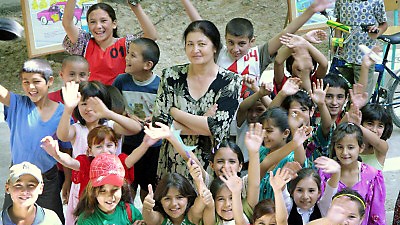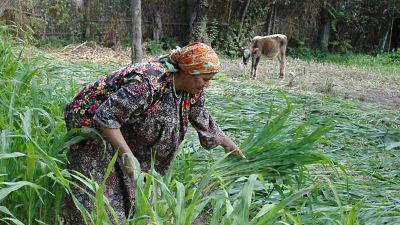Challenge
Tajikistan is a small landlocked country vulnerable to natural disasters and the influence of external economic conditions. Shortly after its independence in 1991, the country descended into a civil war that brought widespread physical damage and loss of life. It is regularly affected by floods, landslides, earthquakes, and droughts, and only 7 percent of its total land area is arable. It is also subject to frequent disruptions in trade and transport and severe winter energy deficits, partly due to regional political instability. These factors make Tajikistan one of the world’s poorest countries, with a gross national income per capita of US$870 in 2011.
Development challenges stem directly from the postconflict context. Fluctuations in remittances inflow, chronically low agricultural productivity, and a weak social protection system left those living in or near poverty with few means to cope with shocks during the global financial crisis. Limited employment opportunities have led up to 40 percent of the working-age population to seek jobs abroad, largely in Russia. Tajikistan is the most remittance-dependent nation in the world, with 47 percent of GDP coming from migrant labor in 2012. Female-headed households are particularly dependent on remittances and thus more vulnerable to shocks. Other persistent challenges constraining development include an unreliable energy supply, administrative barriers to private sector growth (e.g., tax administration), and inadequate access for the poor to good quality education and health care. Improving the business environment and managing relations with neighboring countries will be important to stimulating private and foreign direct investment to sustain economic growth over the long term.
Solution
Looking forward, the main goal will be to help stimulate private investment through structural reforms and financial sector development. Concerted efforts are needed to reduce costs and raise the profitability of private investments and exports, especially in agriculture and agro-processing. Once dominated by cotton, crop and land use reforms are boosting non-cotton agricultural exports, suggesting significant room for future growth. Agribusiness potential will depend on more competitive conditions inside Tajikistan and the easier cross-border movement of goods to regional markets. It will also require enhanced regional cooperation and priority public investments in infrastructure and energy. To complement private sector development, the WBG is improving public administration and governance, human capital development, and energy security. Four multi-donor mechanisms address these core challenges: the US$3.8 million Governance Partnership Facility grant, the Climate Investment Fund for implementation of a US$50 million Pilot Program for Climate Resilience, the US$28 million Global Food Security grant, and a forthcoming US$20 million Communal Services Development Fund.





